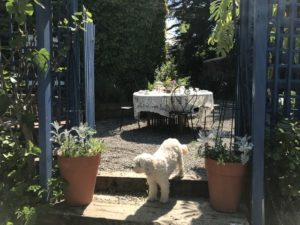Getting rid of weeds now saves so much grief later on
Hoeing now, disturbs slug eggs, reducing their population, reducing loss of baby shoots.
A most popular tool! The double action Oscillating Hoe has an outstanding reputation for being fast and effective. Also called the stirrup hoe.
How to use: Stand in an upright position holding the long handle. Move the hoe backwards and forwards using small movements (10-15cms) so that the hinged bladed moves back and forwards in the soil. The blade is parallel to the ground and cuts the weeds off at the root.
- The blade of the oscillating hoe works parallel to the ground.
- Weeds are undercut by pushing/pulling the sharp blade through the top layer of the soil.
- Effect – weeds cut off and soil surface loosened for better air/water penetration.
- Blades are made of high tempered spring steel to stay sharp.
- Hoe widths available: 125mm & 85mm (other on request).
- Blades are screwed on for easy replacement.
Price does not include delivery
Mornington Garden will reopen in 2024 to small groups and individuals for garden tour with morning coffee or afternoon tea.
Booking is essential
Mobile: 087-2256365
Email: dalkeygarden@gmail.com
Annmarie





